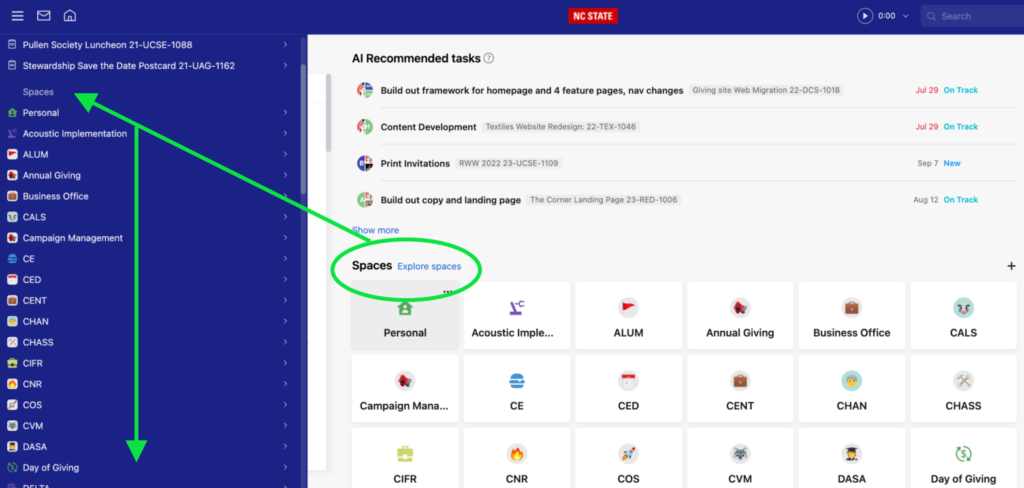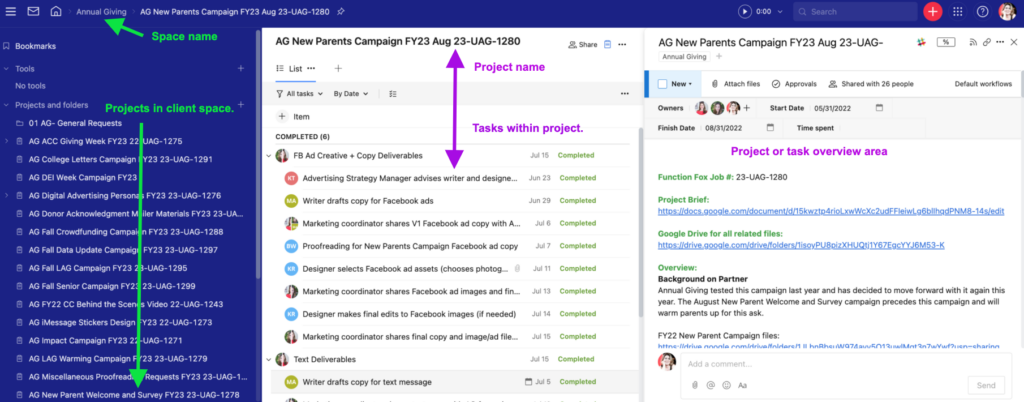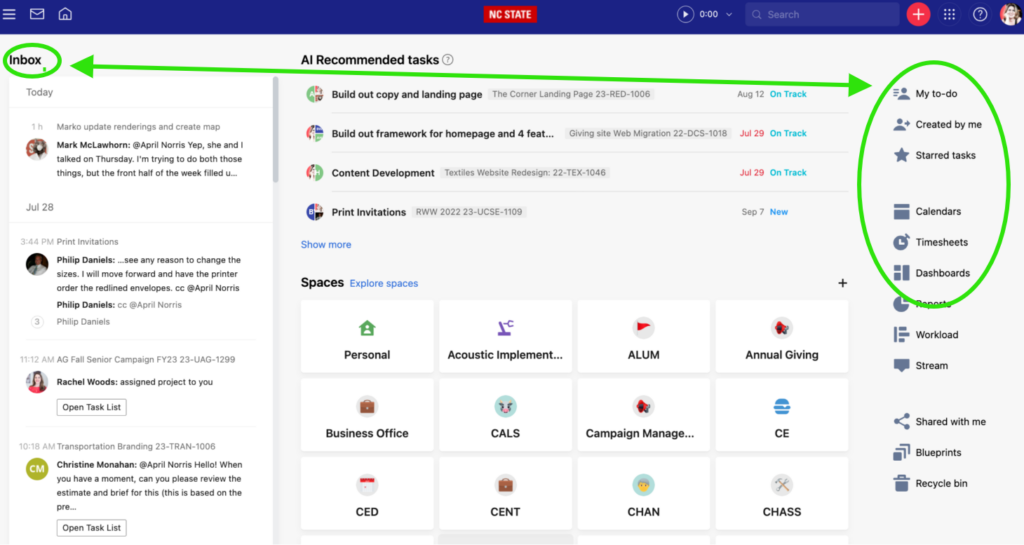Wrike: UComm’s Project Management Tool
Brief History:
In early 2020, a committee of brilliant UComm team members evaluated project management tools that would help enhance project workflow and coordination. The committee chose Wrike and we’ve been actively using this tool since October 2020.
Why:
Wrike helps us track and coordinate projects boosting collaborative work management. Allowing us to easily see, manage, prioritize and communicate about tasks for a specific project. It also helps coordinate and centralize documents related to completing work. You are encouraged to watch the following training video to familarize yourself with Wrike tools.
UComm Basics:
Wrike focuses on three main functions that users interact with: spaces, projects and tasks.
Spaces are the overarching structure for organizing projects for our clients. Each client has their own space in Wrike. Within the client space, we have project-specific folders with detailed information and tasks for each project.

Within each project are tasks that outline specific actions to be completed as part of one project’s broader goals. For example, the assigned marketing coordinator or project lead gives tasks to team members or multiple team members, sets due dates, adds file attachments, and provides a more detailed description of the work to be carried out.
Team members can leave comments on projects and tasks with @mentions and by posting emojis.
How Work is Initiated
Managed Projects
- Managed projects including billable and non-billable are created by the assigned MSCS team member in client spaces.
- Each project will identify the FunctionFox job number (e.g. 23-DASA-1049) and the name of the project so that you can easily track time worked against the project.
- MSCS will assign each project with team members and associated deliverables/tasks.
- MSCS will be responsible for checking in and marking tasks/assignments as complete.
- You are welcome to assign yourself additional tasks under your main task if you’d like for personal organization.
- MSCS will set milestones and check in with teams to record time spent on task/projects.

Where Work is Done
All work should be documented in the task description. Once work is ready for review in the task with attachments uploaded, @mention the assigned MSCS rep for review.
- Users should work out of the assigned client space/project.
- Should users track their time? Yes! Please note the time you spend on projects and log them in FunctionFox under the assigned job #.
- Who’s responsible for marking the task complete?
- MSCS will mark the task complete.
- Should users make comments at the task or project level?
- If a comment impacts a specific task, make the comment at the task level.
- If a comment impacts the overall project like timeline, etc, make a comment at the project level.
Where to Find Your Work
- Inbox
- My to-do
- Starred items
- Dashboards

Wrike Expectations
- Check your tasks (dashboard) at the beginning and end of the day
- You are responsible for notifying MSCS when tasks are ready to go to the next stage or if they are completed in Wrike – if it’s not updated then it looks like it’s not done – this can impact the project timeline.
It’s important to note that clients and some internal team members are not in Wrike. Use email for situations like:
- One-way communication (instructional — no reply expected).
- Long-form communication.
- External communication.
Use chat/instant messaging (Slack, Teams, Hangouts):
- Need immediate answer (rule: short shelf-life).
- General conversation.